'No structures standing' 1 km from the shore in central Philippine city
One of the most powerful storms ever recorded killed at least 10,000 people in the central Philippines, a senior police official said on Sunday, with huge waves sweeping away entire coastal villages and devastating the region's main city.
Super Typhoon Haiyan destroyed about 70 to 80 percent of the area in its path as it tore through Leyte province on Friday, said police chief superintendent Elmer Soria.
As rescue workers struggled to reach ravaged villages along the coast, where the death toll is as yet unknown, survivors foraged for food or searched for loved ones.
"People are walking like zombies looking for food," said Jenny Chu, a medical student in Leyte. "It's like a movie."
Most of the deaths appear to have been caused by surging seawater strewn with debris that many said resembled a tsunami, flattening houses and drowning hundreds of people in one of the worst natural disasters to hit the typhoon-prone Southeast Asian nation.
Sustained winds reached 313 kilometers per hour, with gusts of up to 378 km per hour.
The government and the national disaster agency have not confirmed the latest estimate of deaths, a sharp increase from initial estimates on Saturday of at least 1,000.
"We had a meeting last night with the governor and the other officials. The governor said, based on their estimate, 10,000 died," Soria told Reuters. "The devastation is so big."
Philippine President Benigno Aquino III, who landed in Tacloban on Sunday to get a firsthand look at the disaster, said the government's priority was to restore power and communications in isolated areas to allow for the delivery of relief and medical assistance to victims.
Witnesses and officials described chaotic scenes in Leyte's capital, Tacloban, a coastal city of 220,000 about 580 km southeast of Manila, with hundreds of bodies piled on the sides of roads and pinned under wrecked houses.
The city lies in a cove where the seawater narrows, making it susceptible to storm surges.
The city and nearby villages as far as 1 km from shore were flooded, leaving floating bodies and roads choked with debris from fallen trees, tangled power lines and flattened homes. TV footage showed children clinging to rooftops.
"From a helicopter, you can see the extent of devastation. From the shore and moving a kilometer inland, there are no structures standing. It was like a tsunami," said Interior Secretary Manuel Roxas, who had been in Tacloban since before the typhoon struck the city.
"I don't know how to describe what I saw. It's horrific."
The UN's Office for the Coordination of Humanitarian Affairs said aerial surveys showed "significant damage to coastal areas with heavy ships thrown to the shore, many houses destroyed and vast tracts of agricultural land decimated".
Looters rampaged through several stores in Tacloban, witnesses said, taking whatever they could find as rescuers' efforts to deliver food and water were hampered by severed roads and communications.
Mobs attacked trucks loaded with food, tents and water on Tanauan bridge in Leyte, said Philippine Red Cross Chairman Richard Gordon. "These are mobsters operating out of there."
Tecson John Lim, the Tacloban city administrator, said city officials had so far only collected 300 to 400 bodies, but believed the death toll in the city alone could be 10,000.
The World Food Programme said it was airlifting 40 metric tons of high-energy biscuits, enough to feed 120,000 people for a day, as well as emergency supplies and telecommunications equipment.
 Luxury-cars parade held in Dubai
Luxury-cars parade held in Dubai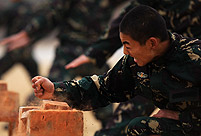 Special forces take tough training sessions
Special forces take tough training sessions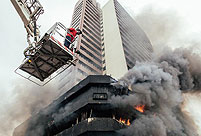 Fire guts 22-storey Nigeria commercial building in Lagos
Fire guts 22-storey Nigeria commercial building in Lagos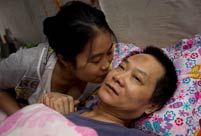 A girl takes care of paralyzed father for 10 years
A girl takes care of paralyzed father for 10 years A record of Beijing air quality change
A record of Beijing air quality change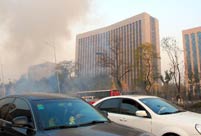 In pictures: explosions occur in Taiyuan
In pictures: explosions occur in Taiyuan Hello! Horror Halloween Celebration!
Hello! Horror Halloween Celebration!  The catwalk to the world of fashion
The catwalk to the world of fashion 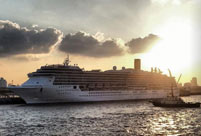 Cruise trip to Taiwan
Cruise trip to Taiwan  Maritime counter-terrorism drill
Maritime counter-terrorism drill Loyal dog waits for master for six months
Loyal dog waits for master for six months Oriental education or western education?
Oriental education or western education? China in autumn: Kingdom of red and golden
China in autumn: Kingdom of red and golden National Geographic Traveler Photo Contest
National Geographic Traveler Photo Contest Chinese screen goddesses from Beijing Film Academy
Chinese screen goddesses from Beijing Film Academy Day|Week|Month